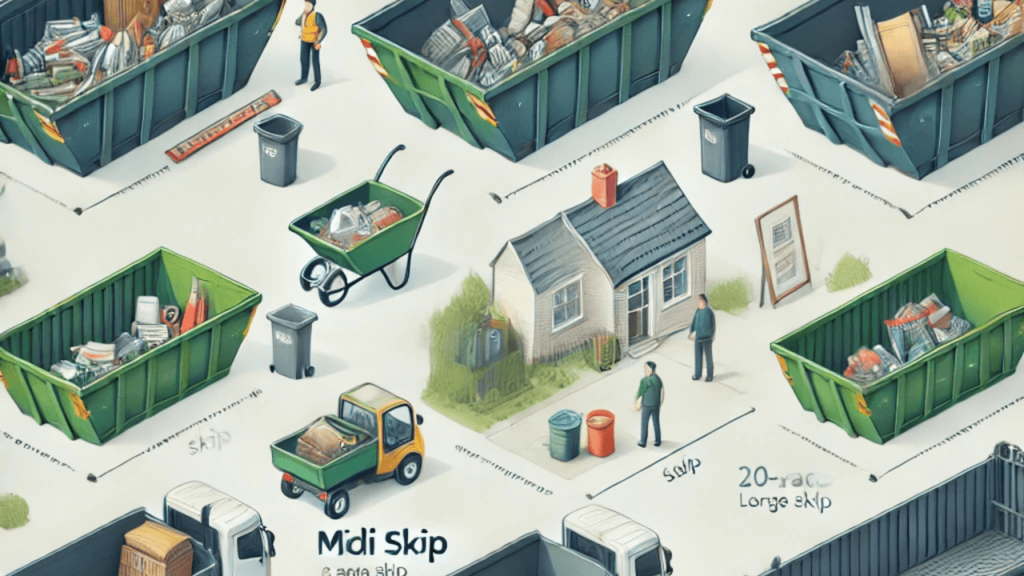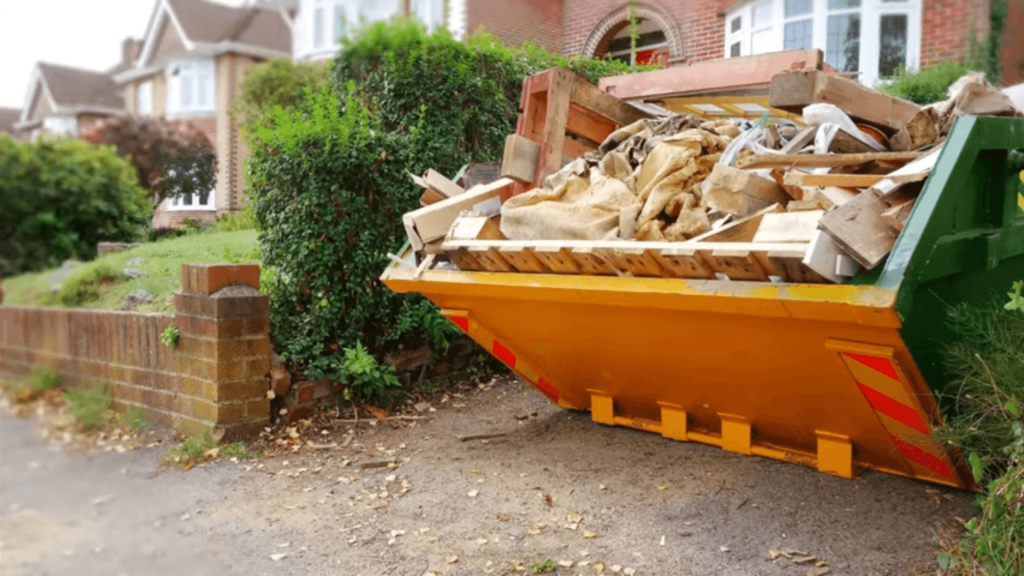When starting a project that generates a lot of waste, choosing the right skip size is important. Picking a skip that is too small means extra costs for another skip. On the other hand, a skip that is too big means paying for unused space. This guide will help you understand the different skip sizes and how to choose the right one for your needs.
Why Choosing the Right Skip Size Matters
- Saves Money – A skip that is too large means wasted money, while a skip that is too small may require hiring a second skip.
- Avoids Overfilling – Overfilling a skip is illegal and dangerous.
- Ensures Proper Waste Disposal – A well-sized skip helps manage waste effectively.
- Fits Your Space – A skip that is too large may not fit in your driveway or worksite.
Types of Skips and Their Sizes
Skips come in different sizes to suit different needs. Below is a table showing the most common skip sizes, their capacities, and typical uses:
| Skip Size | Capacity (Cubic Yards) | Approx. Bin Bags | Best For |
|---|---|---|---|
| Mini Skip | 2-3 yards | 20-30 bags | Small home projects, garden waste |
| Midi Skip | 4-5 yards | 30-50 bags | Bathroom/kitchen renovations |
| Builder’s Skip | 6-8 yards | 50-80 bags | Construction work, bulky waste |
| Large Skip | 10-12 yards | 100-120 bags | Large home renovations |
| Roll-on Roll-off (RoRo) Skip | 15-40 yards | 150+ bags | Large commercial projects |
How to Choose the Right Skip Size
1. Assess Your Waste Type
The first step is to consider the type of waste your project will generate.
- General Household Waste – Old furniture, kitchen waste, and other non-hazardous materials.
- Garden Waste – Leaves, branches, soil, and grass.
- Construction Waste – Bricks, concrete, tiles, and plasterboard.
- Hazardous Waste – Chemicals, asbestos, and electrical appliances (these may need special disposal).
2. Estimate the Waste Volume
Try to estimate the total amount of waste you’ll generate. Use these guidelines:
- Small projects (cleaning out a room, minor garden work) → Mini skip (2-3 yards)
- Medium projects (kitchen/bathroom renovation) → Midi skip (4-5 yards)
- Home renovations, construction work → Builder’s skip (6-8 yards)
- Large-scale projects → Large skip (10-12 yards) or RoRo skip (15-40 yards)
3. Consider Space and Placement
Before hiring a skip, check where you will place it.
- Small skips can fit in a driveway or front yard.
- Larger skips may need to be placed on the street, which requires a permit.
- RoRo skips need extra space for delivery and collection.
4. Understand Skip Permit Rules
If you don’t have space on private property, you may need to place the skip on a public road. In this case:
- Check local council rules for permits.
- Add safety lights and markings if required.
- Be aware of time limits on how long the skip can stay.
5. Avoid Overloading the Skip
Filling a skip above its maximum level is not allowed. It can be dangerous and result in extra charges.
Tips to maximize skip space:
- Break down large items (e.g., flatten boxes, dismantle furniture).
- Load heavy materials first, then lighter ones on top.
- Distribute waste evenly to avoid overloading one side.
Common Mistakes to Avoid
- Choosing a Skip That’s Too Small
- This leads to hiring a second skip, increasing costs.
- If unsure, go for a slightly larger skip.
- Overfilling the Skip
- This can lead to fines or extra charges.
- Some companies refuse to collect an overloaded skip.
- Not Checking Permit Requirements
- Placing a skip on a public road without a permit can result in fines.
- Mixing Prohibited Waste
- Hazardous waste like paint, batteries, or asbestos cannot be disposed of in regular skips.
Skip Size Selection Guide
If you’re still unsure, use this quick guide:
| Project Type | Recommended Skip Size |
|---|---|
| Small garden clean-up | 2-yard mini skip |
| Single-room decluttering | 3-yard mini skip |
| Bathroom renovation | 4-yard midi skip |
| Kitchen renovation | 6-yard builder’s skip |
| Home extension | 8-yard builder’s skip |
| Large construction project | 12-yard large skip |
| Commercial waste disposal | 15-40 yard RoRo skip |
Skip Hire Cost Factors
The cost of hiring a skip depends on several factors:
- Skip Size – Larger skips cost more.
- Location – Urban areas may have higher skip hire costs.
- Permit Fees – If placed on a public road, a permit is required.
- Waste Type – Some materials may require extra disposal fees.
Estimated Skip Hire Prices
| Skip Size | Average Cost (€) |
|---|---|
| Mini Skip (2-3 yards) | €70 – €120 |
| Midi Skip (4-5 yards) | €100 – €180 |
| Builder’s Skip (6-8 yards) | €150 – €250 |
| Large Skip (10-12 yards) | €200 – €350 |
| RoRo Skip (15-40 yards) | €300 – €700 |
Frequently Asked Questions
1. What is the most common skip size?
The 6-yard builder’s skip is the most commonly used for home renovations and small construction jobs.
2. Can I put a mattress in a skip?
Many skip hire companies do not allow mattresses unless an additional fee is paid. Check with the provider.
3. Do I need a permit for a skip?
If placed on private property, no permit is needed. If placed on a public road, a permit is required.
4. How long can I keep a skip?
Most hire periods are 7-14 days, but this varies by company.
5. What happens to the waste after collection?
Waste is taken to a recycling facility, where recyclable materials are separated. The rest is sent to landfill or processed further.
Final Tips for Choosing the Right Skip
- Plan ahead – Estimate your waste before hiring a skip.
- Go one size bigger – If in doubt, choose a slightly larger skip.
- Check permit rules – Avoid fines by ensuring you follow local regulations.
- Load efficiently – Break down items and distribute waste evenly.
- Compare prices – Get quotes from different skip hire companies to find the best deal.
By following these tips, you can choose the right skip for your project, save money, and ensure proper waste disposal.
Do you need a skip? Start comparing quotes today!



